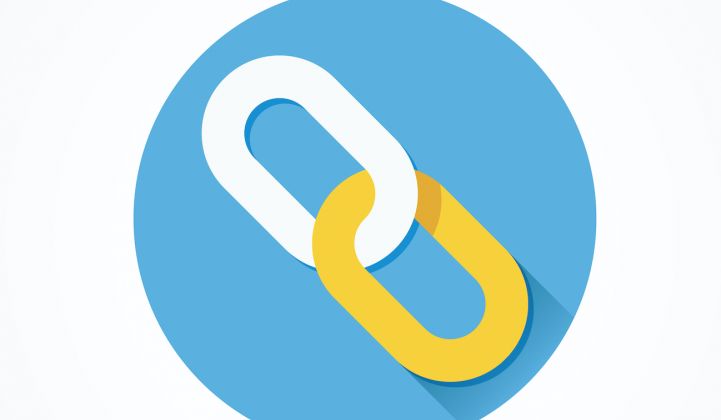Siemens is collaborating with New York-based startup named LO3 Energy on developing microgrids based on blockchain technology to enable local energy trading.
In a press release, Siemens said the project would be “the first of its kind in the world and a starting point for developing other joint microgrid projects in U.S. and other countries.”
LO3 Energy has already developed a pilot microgrid, equipped with a peer-to-peer trading platform called TransActive Grid, in Brooklyn, New York.
Blockchains are distributed databases that can handle virtually unlimited, unalterable linked records. The concept was invented as the public ledger for tracking transactions of the digital currency bitcoin. Since its inception in 2008, bitcoin trading has reached $11.7 billion in value.
Many other industries are looking to use blockchain to track and secure transactions -- from health records to music. And now the energy industry is getting in on the action.
Can blockchain help enable peer-to-peer transactions of renewable electrons?
Siemens thinks so. By partnering with LO3 Energy, the industrial behemoth hopes to “make it possible for a provider of photovoltaic systems on the roofs of buildings in Brooklyn to feed its excess electricity back into the existing local grid and receive payments from the purchasers.”
The microgrid is also designed to operate in a standalone fashion in the event of a disaster.
“We’re convinced our microgrid control and automation solutions, in combination with the blockchain technology of our partner LO3 Energy, will provide additional value for our customers,” said Ralf Christian, the CEO of Siemens’ energy management division, in the press note.
LO3 Energy is funded by Siemens’s Digital Grid division, which is dedicated to helping utilities embark on digitalization journeys, and next47, a Siemens unit launched in October “to foster disruptive ideas more vigorously and to accelerate the development of new technologies.”
The LO3 Energy collaboration is the first project to be publicly linked to next47, which has offices in Berkeley, Shanghai and Munich, and a budget of $1.1 billion for the next five years.
The New York project combines blockchain applications and distributed electrification -- two of the five areas specifically called out on next47’s website, along with artificial intelligence, autonomous machines and connected e-mobility.
There is growing interest in the use of blockchain technologies for energy trading. Siemens' support of the blockchain microgrid project is a good sign for the industry, said one expert.
“The news with Siemens is great,” said François Sonnet, co-founder of a blockchain technology called ElectriCChain, which supports SolarCoin, a digital asset designed for solar energy trading. “It goes past the proof of concept, opening up new markets and business models, including [ones] for SolarCoin.”
SolarCoin, for example, was launched in January 2014 and has supported transactions worth more than $2.1 million, placing it just outside the top 50 cryptocurrencies presently in circulation.
SolarCoins are awarded free to participating solar power producers, at a rate of 1 SolarCoin per megawatt-hour of generation. In October, the cryptocurrency went live on the Lykke Swiss exchange, a blockchain currency trading market.
Elsewhere, a number of solar trading platforms are looking to work with cryptocurrencies in order to simplify cross-border transactions.
“If you don't live in the country [where] the project is located, transferring currency between countries is often expensive and time-consuming, so we accept bitcoin so that you can own solar assets wherever you are," explains the South Africa-based Sun Exchange.
It is unclear whether Siemens-LO3 Energy project will use a cryptocurrency that can be traded beyond the microgrid. For now, Siemens is working on integrating with LO3's project.
“We'll be providing our microgrid management software, which links to LO3's blockchain platform, allowing the two systems to communicate with one another," explained Annie Satow, a spokesperson with Siemens. “Linking the two enables real-time analysis of the microgrid's operation, along with trading between consumers and producers. It's a first-of-its-kind project and something we'll hope to bring to other parts of the world based on what we learn in Brooklyn.”
Still wondering how the blockchain could be applied to energy? Listen to our explainer podcast below.




